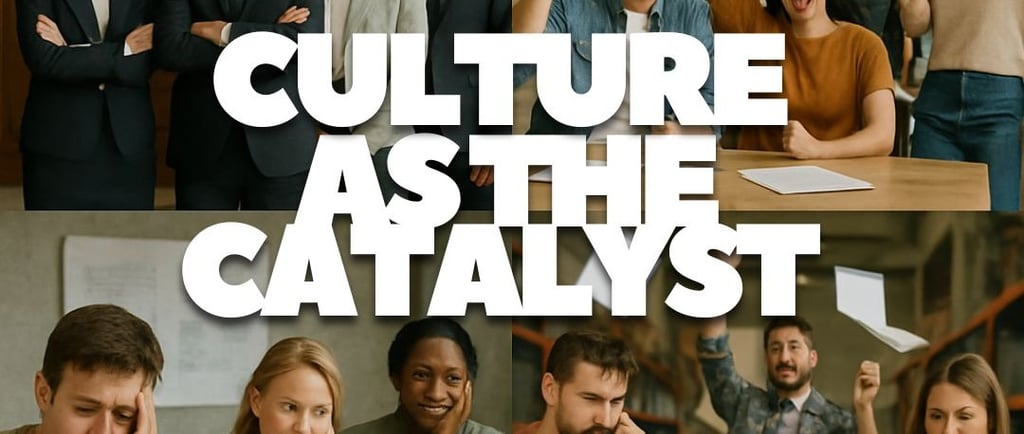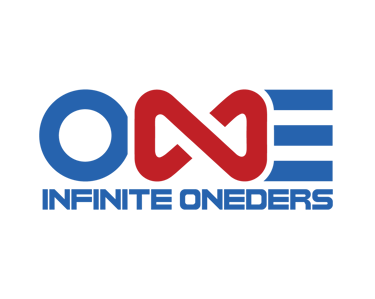Culture as the Catalyst: How It Shapes the Success of Your Business
What makes some companies effortlessly innovative, resilient, and trusted, while others struggle with talent churn, inefficiencies, or stagnation?
Shyjin Bhaskaran M
8/5/20253 min read


It often boils down to something intangible but deeply influential: culture.
In a world obsessed with strategies and KPIs, culture tends to be underestimated. But the truth is—culture drives behaviour, behaviour drives performance, and performance drives results.
Let’s explore how culture fits into the big picture using a timeless tool: the McKinsey 7S Framework.
🧩 The Hidden Anatomy of a Business
The McKinsey 7S Framework was developed in the early 1980s by Tom Peters and Robert H. Waterman Jr. It helps leaders understand their business as a system of interconnected elements.
Instead of focusing only on structure or strategy, this model brings culture and people to the forefront.
The 7 Elements:
Hard S’s – Easier to Define and Control:
Strategy – Your competitive game plan.
Structure – How your teams are organised.
Systems – Daily processes, tools, and operations.
Soft S’s – Harder to Measure, Deeper in Impact: 4. Shared Values – Core beliefs that shape behaviour. 5. Style – Leadership approach and interaction style. 6. Staff – Who you hire, how you train and grow talent. 7. Skills – What your organisation is truly good at.
At the centre of the 7S model? Shared Values—aka your culture.
🧠 Culture Isn’t a Soft Idea—It’s a Strategic Lever
Have you ever joined a company and immediately felt the atmosphere?
Some feel alive, creative, open, and agile.
Others feel rigid—fearful of change or bogged down by internal silos.
That feeling is culture. And it affects everything from performance to innovation to employee retention.
A brilliant strategy will fall flat if culture doesn’t support it. That’s where the 7S model becomes a powerful lens. It shows that success requires alignment—from strategy to systems to style.
📊 Culture by Design, Not Default
Organisations operate within different cultural models, each with its own set of traits, advantages, and challenges. Hierarchy cultures are characterised by control and structured processes, offering predictability and consistency. However, they often risk becoming bureaucratic and slow to adapt. In contrast, clan cultures are team-oriented and supportive, fostering high morale and strong trust among employees, though they may struggle with a lack of urgency or decisiveness. Market cultures thrive on competition and results, driving high performance and accountability, but can lead to stress and burnout if not carefully managed. Meanwhile, adhocracy cultures embrace entrepreneurship and innovation, promoting agility and bold experimentation. Yet without proper checks, they can easily descend into chaos or lack direction.
The best companies don’t "find" their culture—they build it intentionally and ensure their strategy, systems, and people reinforce it.
💡 Real-World Reflection
Picture two companies launching the same product.
Company A has top talent, a great product, and strong funding. But silos exist. Leaders micromanage. Employees fear making mistakes. Creativity is stifled.
Company B has similar resources, but its leadership fosters trust. Learning is encouraged. Collaboration is embedded in the culture.
Guess which company will adapt faster, innovate better, and retain its people longer?
That’s the power of alignment. That’s the power of culture.
🔁 How to Use the McKinsey 7S for Culture Alignment
Use the framework to ask powerful questions:
Are our shared values really reflected in our leadership and policies?
Does our strategy fit the skills and structure we currently have?
Do our systems support our culture, or do they frustrate it?
Is our style of leadership helping or hindering our people?
Whether you’re scaling, restructuring, or launching something new, this model ensures nothing is left behind in your transformation.
🎯 Final Thought: Culture Is the Business
You can’t delegate culture to HR. It’s not built in offsites or posters. It’s built in decisions, behaviours, and how leaders show up every day.
“Culture eats strategy for breakfast.” – Peter Drucker
But when strategy and culture are aligned, you don’t just get breakfast. You get performance, innovation, and long-term excellence.
So ask yourself—is your culture helping or hurting your growth?
